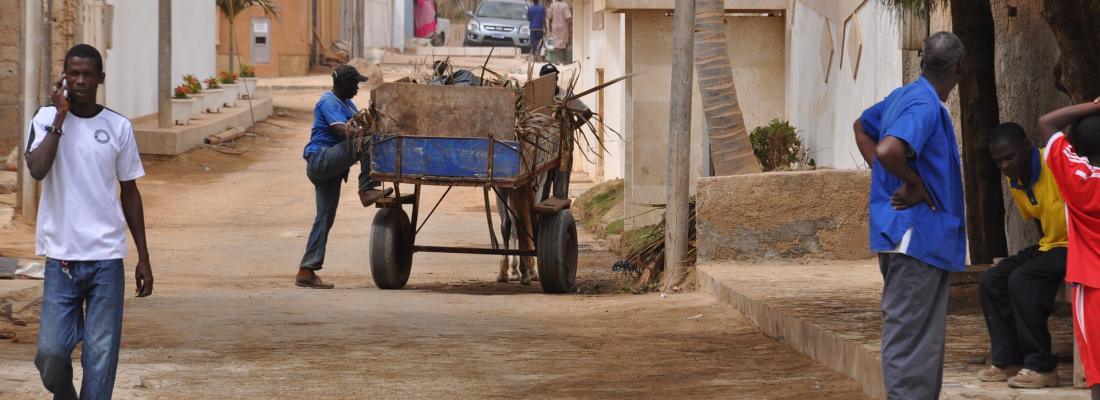Society and regional strategies Reading time 3 min
Senegal: assessing inequalities within a household to better orient public aid
Published on 05 July 2021

To measure poverty, Senegal, like most countries, uses household consumption surveys, where a household is defined as all the occupants of a dwelling. For these surveys, only one person is interviewed, usually the head of the household, for the entire household. In developing countries, particularly in sub-Saharan Africa, households often do not correspond to the family structure of a couple with children sharing a residence. They are often extended, including, depending on the case, the parents of the head of the household, his or her siblings with their families, and/or other relatives (sisters-in-law, cousins, etc.). Moreover, in Senegal specifically, different members of the household may have private incomes that are not known to all. For example, the wife of the head of household has her own expenses, such as clothing or calling plans, and also has resources of her own that the husband may not be aware of. To obtain a comprehensive view of Senegalese household consumption and to re-examine inequalities, economists from INRAE and the Université Paris-Dauphine conducted the "Poverty and Family Structure" survey to collect information on the consumption and resources of 18,000 individuals from approximately 2,000 households representative of Senegal in 2007. Participants were re-interviewed in 2012.
Higher consumption but greater inequality
In order to make the study as comprehensive as possible, each household was divided into subgroups consisting of an adult who oversees spending and is responsible for people financially dependent on him/her, e.g. a woman and her children. Asking separately each person responsible for 'dependents' about their spending makes it possible to measure consumption that is usually neglected because it is not known by the head of the household. The study recorded a level of household consumption 30% higher than that observed in the national survey carried out the same year using the traditional method, which only interviews one person per household. The poorest households are little affected by this difference in the way data is collected because there is usually only one source of income and all expenses are known by the head of the household. But the higher the income level, the more the study results diverge from those of the traditional survey with a significant increase in consumption for the richest households. Distribution of consumption is therefore more unequal than what is measured on the basis of the traditional survey. The Gini coefficient, for example, which measures the level of inequality in the distribution of consumption within a country, rises from 0.4 based on the traditional survey to 0.5 based on this one, which puts Senegal among the highly unequal countries. As a comparison, France's Gini coefficient is 0.32.
13.4% of the poor thought to be 'hidden' in households that are not considered poor
In their study economists used this data to measure inequality within a household (intra-household inequality). Indeed, some individuals within the household have more or fewer personal resources which are not pooled. Researchers calculated an average intra-household inequality that accounts for about 14% of total inequality in the survey. To appreciate the significance of this figure, they compared it to what the share of intra-household inequality would be in total inequality, in the perfectly unequal situation where a single individual holds all the resources not devoted to common expenses, i.e. about 40%. By doing this, the researchers show that measured intra-household inequality rises to about one third of the maximum. Such intra-household inequalities are important to consider because they reveal that some households with overall incomes above the poverty line include people with incomes below the poverty line who are not identified as poor by traditional surveys. Thus 13.4% of the poor are said to be "hidden" in households that are not considered poor. This means that public policies aimed at helping poor people miss part of their target. It is nevertheless noteworthy that poor people living in non-poor households are on average less deprived than those living in households below the poverty line.
In Senegal, as in many sub-Saharan countries in Africa, the structure of households is complex because several individual budgets coexist and not all individuals in a household have access to the same level of resources. In this context, it is important to survey individuals at the closest level possible to obtain more accurate measurements of poverty levels and to help anti-poverty public policies to better target poor people.
Reference
Philippe De Vreyer, Sylvie Lambert, Inequality, poverty and the intra-household allocation of consumption in Senegal, World Bank Economics 2021, issue 2, vol 35. DOI: 10.1093 targets lhz052
